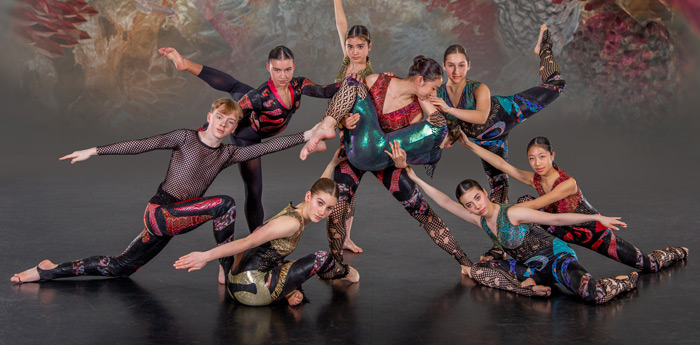Resilient. Self-confident. Creative. Compassionate. Many artists – many people – would like to think of themselves thus. It should therefore come as little surprise to find these qualities enshrined in the mission statement of one of the country’s pioneering performing arts high schools.
Established in 1978, The Victorian College of the Arts Secondary School (VCASS) started teaching and training young artists, dancers and musicians prominent amongst them, long before ‘creative’ became a buzzword.

However, if the thinking of governments, educators and industry have finally caught up with them, VCASS are not sitting still. In partnership with nearby Albert Park College, and with the support of their local State MP, they are one of the prime movers behind the newly announced Victorian Youth Arts Hub project at the Gasworks site in inner Melbourne. More than a complex of performance, rehearsal and training spaces, the development underlines VCASS’s decades long commitment to the idea of giving young people their voice.
As Principal Hilary Bland points out, the VCASS remit was always to be “a secondary school where students who had talent or potential in music or dance could have that potential developed regardless of socio-economic factors.” The Gasworks development aims to reiterate this ethos by opening itself up to schools and youth arts groups from across the state.

While this may sound like press release puff, for both VCASS and Albert Park College, the new space is designed to address key practicalities. “What we don’t have is our own theatre that we can timetable,” Bland explains. “So, we’ve been lucky enough that our local member, Martin Foley, was interested in creating something that could be used by more than one school.”
At present, despite their status as the state’s leading performing arts high school, VCASS does not have its own dedicated theatre space. This means they are forced to hire suitable venues, and that involves working around commercial availability. Juggling this with the rigours of the formal academic year is not merely tricky but often problematic. The Gasworks project aims to streamline the timetable. “We can schedule it when it works for the learning of the students, as opposed to scheduling a performance because a theatre is available,” Bland says. “It’s much better for the learning cycle that way.”

However, there is another aspect of school-based performance that most theatres do not cater for — namely, numbers. “If we’re putting on something with all of our dance students in it, there’s likely to be a hundred young people involved,” Bland elaborates. “Most theatres provide backstage for about six or seven because, as we know, it’s extremely expensive to put on the arts and that’s all you can afford.”
To this end, the architects have created multi-function spaces that can flip between training, warm-up and green rooms. “The design is really about trying to provide an opportunity where there is enough space, backstage space, for school performances. For instance, when we use the Malthouse Theatre for one of our dance shows, we need to have both theatres, because one of them needs to be a changeroom.”

The Victorian Youth Arts Hub will have two theatres (a 350-seater and a smaller, more intimate venue), plus sprung floor studios, rehearsal rooms and exhibition spaces, with a capacity to host 50 productions a year. The greater vision is for it to branch out beyond VCASS and Albert Park College and to be an asset for young performers “regardless of socio-economic factors.”
Yet, beyond that, there is now a belief that the blending of a traditional academic education with an arts focused training regime creates measurable economic dividends, and not just in the usual arts sectors.
As Bland contends, “The creative industries are growing, although absolutely hurt by the last couple of years, hurt almost to the point of being destroyed for many people; but we know that potentially there are a lot of jobs in these industries. I like to take it one step further and talk about the innovation, the collaboration and all those skills you get within an arts environment, and how important those skills are for young people, whether or not they go on to work in the arts.”

Beyond career arcs and dollar returns, though, there is a less quantifiable but perhaps more profound pay-off. “It’s that concept of storytelling and understanding its role in our community,” Bland argues. “It’s the importance of culture and of exploring ideas that are important to young people. And also, the idea of creating new stories. Having that opportunity within a formal school system is, I think, really important.”
Perhaps, as we move forward beyond pandemic paranoia and into the shared uncertainties of the future, we will end up being thankful for that aforementioned catchphrase quartet. Resilience. Self-confidence. Creativity. Compassion.
By Paul Ransom of Dance Informa.















